NIL
Pivot Points: The games that could define the 2025 college football season
We all know the importance of Penn State–Ohio State or the history of Oklahoma–Texas. Those games are already circled on every college football fan’s calendar. But there are other games — either because of the particular circumstances of the season or because of where conference schedule-makers placed them — that hold equal importance. These are […]
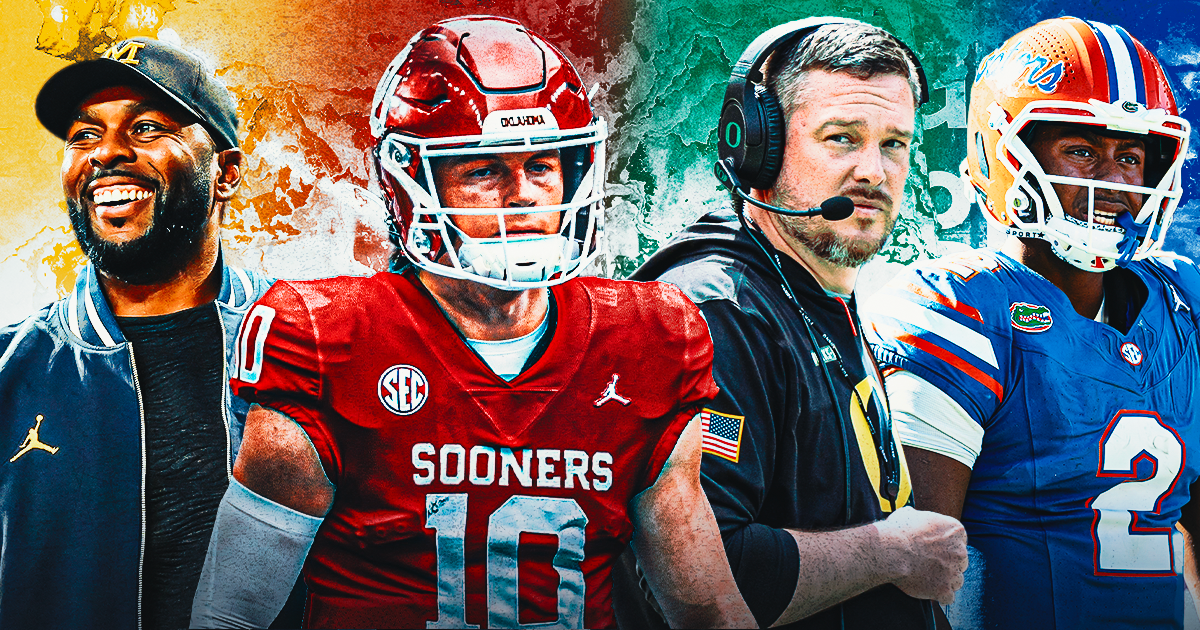
We all know the importance of Penn State–Ohio State or the history of Oklahoma–Texas. Those games are already circled on every college football fan’s calendar.
But there are other games — either because of the particular circumstances of the season or because of where conference schedule-makers placed them — that hold equal importance. These are the Pivot Point games. They’re the wins that can launch a successful streak or the losses that send a team tumbling toward a failed season.
Here are 10 September and early-October games that could make an outsize impact on each team’s season…
Florida at LSU – September 13
This is a guaranteed meltdown game. No matter the result, the losing team’s fanbase will lose its collective mind.
The fans of both these teams expect College Football Playoff contention. Because of the difficulty of the remaining schedules, the loser of this game might not be able to achieve that.
LSU will have already played Clemson and has Ole Miss, South Carolina, Texas A&M and Alabama upcoming. Holding serve at home in the SEC opener will be critical for the Tigers.
The week after they visit Death Valley, the Gators play at Miami. Then, after an open date, they play Texas at home and then at Texas A&M. That gauntlet will define Florida’s season, and if it doesn’t start with a win, it could go poorly.
There’s nothing like a Saturday night in Death Valley. The greatest atmosphere in college football gets even better when the pressure gets poured on both teams.
Illinois at Indiana – September 20
This won’t be a CFP elimination game. It’s far too early in the season for that. But it will match two potential CFP contenders, and the loser might not be able to reach 10 wins.
Illinois brings back most of the best parts of a team that went 9-3 in the 2024 regular season. Indiana, meanwhile, is going to be far from a one-year wonder under coach Curt Cignetti. The Hoosiers have some of the Big Ten’s most impactful players coming back after going 11-1.
Indiana’s schedule is harder this year, and the Hoosiers’ next two games are at Iowa and at Oregon. With a visit to Penn State still on the schedule, Indiana probably needs to go 2-1 in the Illinois-Iowa-Oregon stretch to be 10-2 or better.
Illinois will already have played Duke and still has Ohio State and a visit to Washington on the docket. This trip to Bloomington will be critical.
Auburn at Oklahoma – September 20
The Jackson Arnold Revenge Game will feature subplots aplenty, but it really comes down to this: Oklahoma and Auburn both expect a much better season than 2024, and both teams feel they should win this game.
I had this game on this list last season. It probably was the pivot point for Auburn, which collapsed following a crippling late interception to drop the second of four consecutive losses. The worst was still yet to come for Oklahoma, which suffered from subpar offensive line play and a receiver room riddled with injuries.
Auburn quarterback Arnold’s return to Norman is the dominant storyline, and it’s about as juicy as it gets. Former blue-chip recruit is hailed as the future of the program. Before he ascends to the starting job, the offensive coordinator leaves, the head coach makes a lazy hire and his season is torpedoed. Afterward, he’s cast aside to make room for a transfer (John Mateer) following the new offensive coordinator (Ben Arbuckle). Now Arnold has a chance to prove the Sooners wrong (or correct). Meanwhile, Mateer will face a defense led by one of the nation’s best edge rushers (Keldric Faulk).
Both teams will have played tough out-of-conference opponents before this game — Baylor for Auburn, Michigan for Oklahoma — but this game starts tough stretches for each team. Auburn’s next three games are at Texas A&M and then home against Georgia and Missouri. Oklahoma has an open date and then Kent State before the Texas game touches off possibly the toughest seven-game stretch in college football history.
Texas Tech at Utah – September 20
It’s tough to pick Pivot Point games in the Big 12 because so many of the teams feel evenly matched. But for Texas Tech’s offseason investment in the transfer portal pays off, the Red Raiders will need to be able to beat a team like Utah.
The Utes’ line of scrimmage players were recruited to win a Pac-12 that still included Oregon, Washington and USC, and if New Mexico transfer quarterback Devon Dampier can spark an offense that has struggled since Cam Rising injured his knee in the Rose Bowl following the 2022 season, then Utah should be capable of contending for the Big 12 title.
This game will match two of the league’s best rosters, and the winner will have a big head-to-head chip in its pocket come November.
Oregon at Penn State – September 27
This will be the first major test for a new-look Ducks team that had to replace first-rounders on both lines of scrimmage and veteran quarterback. Oregon can lose this game and still make the College Football Playoff, but this is the type of team Oregon will have to beat once in the CFP.
The same goes for Penn State, but probably with more urgency. The Nittany Lions did make the semifinals last season, but they did it by beating SMU and Boise State. If Penn State wants to win a national title, it has to start beating opponents with elite talent. This is that type of game. Plus, with road games against Iowa and Ohio State and a visit from Indiana later in the season, there is no guarantee that Penn State can afford to lose this one.
Alabama at Georgia – September 27
This game didn’t necessarily prove anything last season. Alabama jumped on Georgia early and then survived a furious comeback, but the Crimson Tide ended up missing the CFP and Georgia wound up winning the SEC.
The degree of difficulty of an Alabama win in Athens this season might be more indicative of a return to the CFP. With a new starting QB — we’re presuming Ty Simpson — this is a rough first SEC road game. (At least the Tide get the season opener at Florida State to work out any on-the-road kinks.) But if Simpson (or Keelon Russell, if it goes that way), can win between the hedges, he can win anywhere.
Meanwhile, Georgia will be coming off its SEC opener at Tennessee. A win in both could provide a huge confidence boost the rest of the way. Yes, the Bulldogs would still have to play Florida, Ole Miss and Texas, but they get the Rebels and Longhorns at home and haven’t lost to the Gators since 2020.
Boise State at Notre Dame – October 4
The Broncos don’t have to just win the Mountain West to get back to the CFP. They need to prove they can be competitive against a playoff-caliber opponent. Last year, Boise State’s loss at Oregon probably was more important than most of the Broncos’ wins because it showed they could go toe-to-toe against an elite roster. A win at Notre Dame would leave no doubt in that category.
The Fighting Irish have several tough early-season games (at Miami, Texas A&M), and this one ends a challenging early stretch. If Notre Dame comes out of it 5-0 or 4-1, the Irish probably are headed back to the CFP.
Michigan at USC – October 11
Last year’s meeting summed up much of what ailed both programs.
Michigan couldn’t throw, and USC couldn’t stop Michigan from scoring the winning touchdown even though everyone in the stadium knew Michigan couldn’t throw.
This meeting should provide a clear view of how — or whether — these teams have evolved.
Michigan will have played Oklahoma, Nebraska and Wisconsin. (The Nebraska game likely will be without head coach Sherrone Moore because of a school-imposed suspension.) We should know by this point how much of a difference freshman QB Bryce Underwood will make.
USC, meanwhile, will have three Big Ten games under its belt (Purdue, Michigan State, Illinois). It should be 2-1 at worst in those games, and a win against the Wolverines would put the Trojans in a great position heading into games at Notre Dame and Nebraska.
Louisville at Miami – October 17
The Hurricanes’ toughest games might come in the first month, but Notre Dame and Florida aren’t in the ACC. Miami can lose those games and still have a chance to make the CFP as the ACC champ (or possibly as an at-large). Louisville is a potential ACC title contender this year, but if Miami can beat the Cardinals it would put the Hurricanes in a good spot. Miami plays SMU but doesn’t play Clemson in the regular season, so beating Louisville on a Friday night could give the Hurricanes the inside track on an ACC title game berth.
Louisville plays Clemson and SMU in back-to-back weeks in November, so it might need to win this one to have a crack at the ACC title.
Nebraska at Minnesota – October 17
The last Nebraska–Minnesota game — Cornhuskers coach Matt Rhule’s debut in 2023 — was a prime example of the late-game collapses Rhule was hired to purge from the program. Two years later, Rhule seems to have made significant progress.
For Nebraska to take the next step, it needs to win games like this. Minnesota isn’t the sexiest opponent, but the Golden Gophers are tough, well coached and have beaten the Cornhuskers in the teams’ past five meetings.
Minnesota also wants to take another step. The Gophers closed last season by winning six of their last eight, and coach P.J. Fleck’s team should start this season hot. Minnesota should be 5-1 when Nebraska visits. With trips to Iowa and Oregon still on the docket, a win against the Cornhuskers could provide big momentum heading into a critical stretch.
NIL
More Hawai'i history set to be made in 2025 MLB Draft
In 1985, University of Hawai‘i pitcher Mike Campbell was selected with the seventh overall pick of the MLB Draft by the Seattle Mariners. Later in that same draft, ‘Iolani alumnus and 6-foot-9 University of California righty Dave Masters was taken 24th overall by the Chicago Cubs. It was the first and only time two players […]
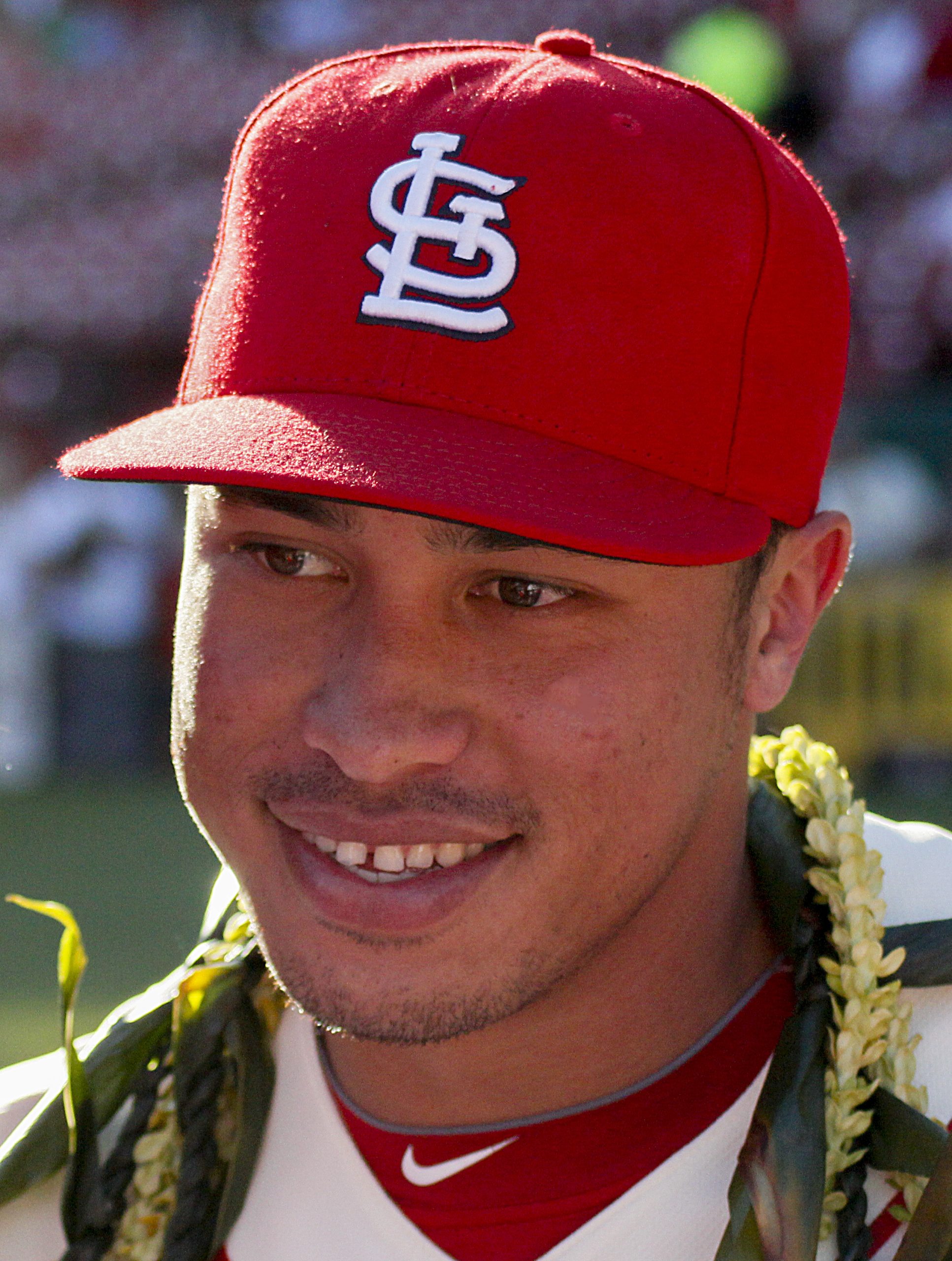

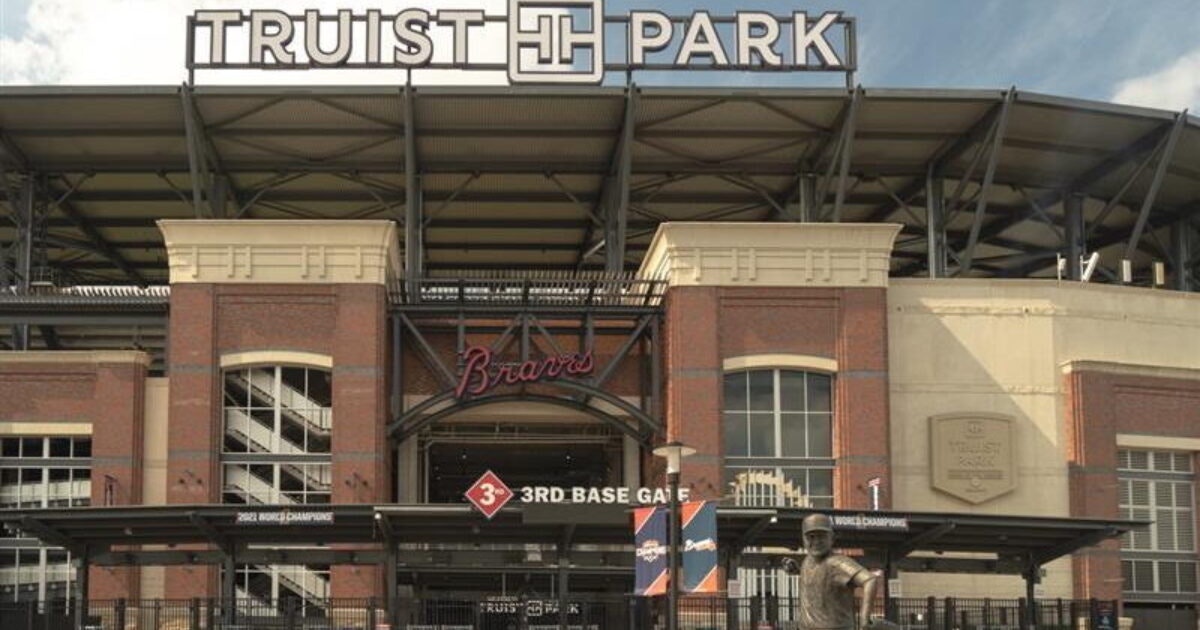
In 1985, University of Hawai‘i pitcher Mike Campbell was selected with the seventh overall pick of the MLB Draft by the Seattle Mariners. Later in that same draft, ‘Iolani alumnus and 6-foot-9 University of California righty Dave Masters was taken 24th overall by the Chicago Cubs. It was the first and only time two players with Hawai‘i ties were selected in the first round in the same MLB Draft.
Forty years later, a new type of history is set to be made regarding players from the Islands in the MLB Draft.
Saint Louis alumnus Aiva Arquette and Baldwin alum Wehiwa Aloy are both poised to become first round selections when the 2025 MLB Draft gets underway on Sunday at noon HST. The duo would become the first from Hawai‘i high schools to do so.
Arquette and Aloy both had stellar seasons in the spring, leading their respective college teams to the College World Series in June.
Following his senior season at Saint Louis, Arquette was taken in the 18th round of the 2022 MLB Draft but instead chose to play collegiately at the University of Washington. After two years with the Huskies, Arquette entered the NCAA transfer portal and transferred to Oregon State, where he slugged 19 home runs while committing just six errors as the team’s starting shortstop. All the while, his .354 batting average led the Beavers.
Aloy began his collegiate career at Sacramento State. After earning Freshman All-American honors, he entered the transfer portal and played the final two seasons of his collegiate baseball career at the University of Arkansas.
In 2025, Aloy took home the Golden Spikes Award, given annually to the country’s top amateur baseball player. He started all 65 games for the Razorbacks in 2025, hitting 21 home runs with a .350 batting average.
Although Aloy was awarded college baseball’s top individual honor, the 6-foot-5 Arquette is viewed as the slightly better pro prospect. Arquette is viewed as a Top 10 pick, while Aloy is also expected to be off the board by the time the first round ends.
The 2025 MLB Draft begins on Sunday with rounds 1-3 and wraps up on Monday with rounds 4-20 beginning at 5:30 a.m. HST. Although Arquette and Aloy are viewed as Hawai‘i’s headliners in the draft, a handful of other names remain on the radar for teams making selections.
Not far behind Arquette and Aloy as a prospect is Saint Louis shortstop and 2025 Hawai‘i Gatorade Player of the Year Bruin Agbayani. Although he signed a scholarship agreement with the University of Michigan, he is likely to get selected within the first five rounds.
Throughout various showcases and tournaments, Agbayani’s bat has proven to travel well. He turned heads in June’s MLB Combine in Arizona, stacking up hits against some of the top arms in the country.
‘Iolani senior Mana Lau Kong signed with the University of Hawai‘i, but there’s also a chance he doesn’t make it campus after being monitored by various MLB organizations.
With the increasing amount of pro scouts taking in regular season high school baseball games in Hawai‘i, the two that appeared to receive the most interest from pro scouts in 2025 were Kamehameha‘s Elai Iwanaga and Kaiser’s Bryson Toner. Iwanaga is set to play collegiately at UCLA, while Toner will play at Loyola Marymount if he does not go pro this summer.
Mililani senior shortstop Malosi Mata’afa-Alferos also received pro looks over the course of his high school career, though he is considered more likely to move on to the University of Oregon in the fall rather than turn professional.
In the local collegiate baseball scene, Hawai‘i Pacific University‘s Bronson Rivera caught the attention of scouts with his 2025 season in which he hit a program record 19 home runs while maintaining a .377 batting average.
As for the University of Hawai‘i, sophomore Itsuki Takemoto is viewed as the program’s top draft-eligible prospect. Utility player Ben Zeigler-Namoa has received pro interest dating back to his days as a junior college player at Yavapai College in Arizona, and his passion for the game has been lauded by scouts.
Matthew Miura, Jordan Donahue, Jared Quandt and Kamana Nahaku are other draft-eligible names for UH that have previously received pro interest.
For the latest news of Hawai‘i, sign up here for our free Daily Edition newsletter.
Christian Shimabuku can be reached at christian@alohastatedaily.com.
In case you missed it
NIL
Thanks to ‘EA Sports College Football’, gamers are the new four-star recruits
Every year, the top college football schools in the country compete against one another to recruit highly ranked prospects coming out of high school. The current college football offseason, however, is looking a little different. Athletes are still being wooed by prestigious programs, but so are creators — and EA Sports College Football 26 is the […]
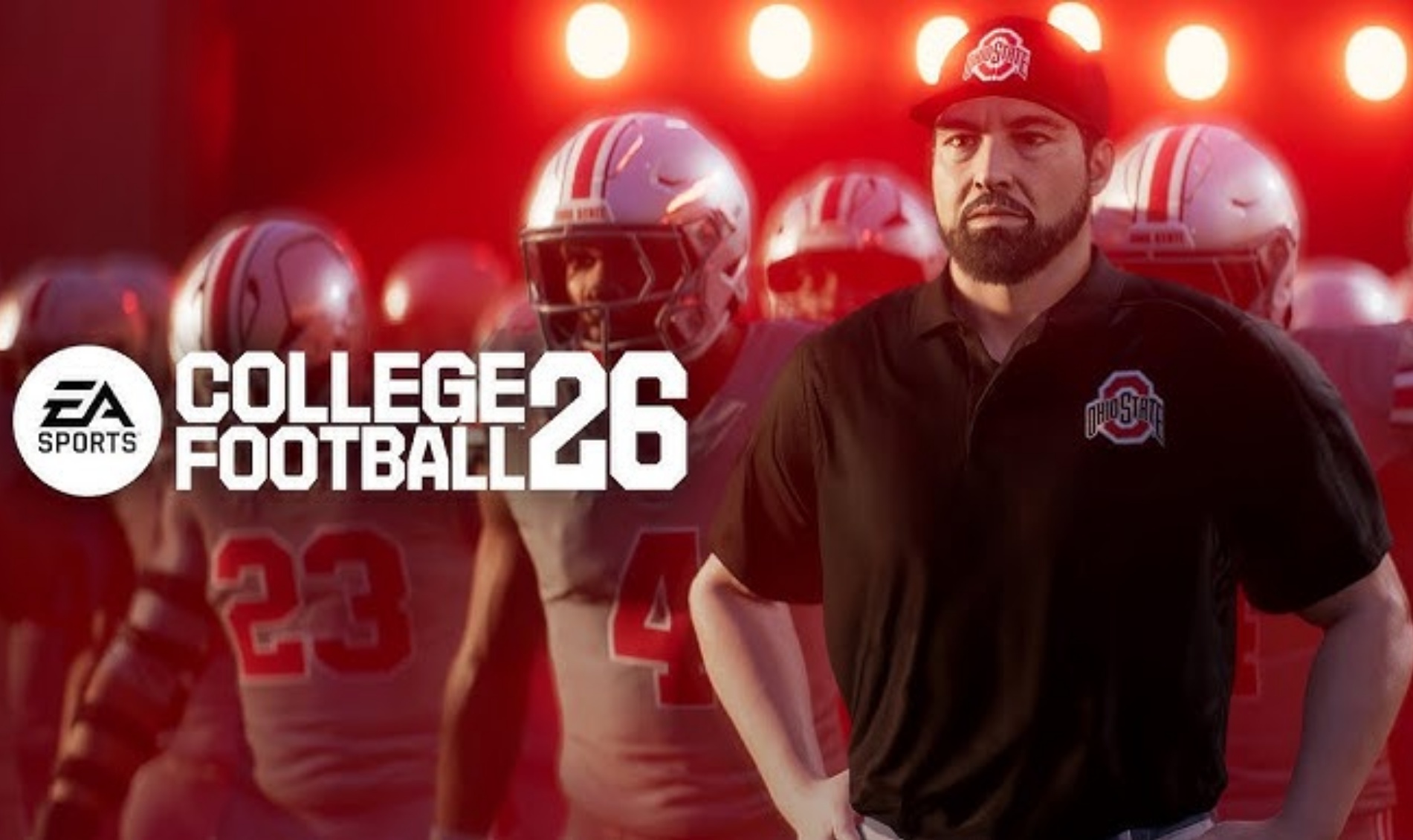
Every year, the top college football schools in the country compete against one another to recruit highly ranked prospects coming out of high school. The current college football offseason, however, is looking a little different. Athletes are still being wooed by prestigious programs, but so are creators — and EA Sports College Football 26 is the main reason why.
College Football 26, which EA released on July 10, is the latest chapter in a video game franchise that dates back to the 90s. Early installments of the series rank among the best sports video games of all time, but the gridiron simulator was forced into dormancy after courts ruled that game publishers could not include amateur athletes who were (at the time) unable to profit from depictions of their likenesses.
The advent of name, image, and likeness (NIL) deals for college athletes changed the narrative. As the value of NIL deals skyrocketed, EA chose to bring back College Football, and players rejoiced. College Football 25 became one of the most-played games of the year.

Subscribe to get the latest creator news
College Football 26 is here, so it’s time for creators to make The Decision.
EA paid out millions to athletes to license their likenesses for use in its fan-favorite franchise. But the players aren’t the only ones to benefit from this gold rush — gamers are cashing in, too.
The Athletic reported that Bordeaux, a popular College Football creator on YouTube, received personalized packages from schools that wanted him to play for their teams on his channel. The bidding environment resembled the feeding frenzy that surrounds coveted high school recruits, and the University of Nebraska ultimately reaped rewards when Bordeaux chose to play as the Cornhuskers in College Football 25.
Now, with the next chapter of the sports simulator out, Bordeaux is once again bringing back his most visible formats. He recently posted an “imperialism” video that pits college football powerhouses against one another in search of territorial expansion.
Bordeaux is one of several creators turning College Football videos into a full-time job. “It shows how deep people’s love for their team is that they were so interested in what a random guy on the internet was going to do, because it could be their team,” he told The Athletic.
Creators are the new blue turf
In 1986, Boise State University covered its football field in bright blue artificial turf. Initially, the colorful field was a mere curiosity, but then something funny happened: Boise State started winning a lot of football games. Since 1999, the Broncos have brought 16 conference championships to the Idaho capital.
The correlation between the installation of blue turf and the reversal of Boise State’s football fortunes could be a coincidence, but the unique field allowed the Broncos to stand out, both literally and figuratively. When you have one of the best attractions for football fans inside your stadium, it helps convince players to come play for a school they may have otherwise ignored.
In the 2020s, creators are doing for schools what blue turf did for Boise State in the 90s and 00s. Features from popular gamers like Bordeaux draw attention to Division I football programs, giving them an edge in the recruiting game.
It’s not just football, either
Among many other creative projects, author and Vlogbrother John Green has become a fan of English soccer club AFC Wimbledon, his go-to choice in sim games like Football Manager. Green’s Wimby affinity started in pixelated fashion, but it has since extended to the real world. After buying a sponsorship on Wimbledon uniforms and helping the club sign new players, the elder Green brother took his fandom to the next level by acquiring a minority stake in the club.
For Green, Wimbledon ownership is a fun diversion that also entertains his fans. But for the club, support from a big-name creator is crucial. As some European clubs fold due to poor financial circumstances, others are seeing celebrity affiliation as a long-term survival strategy.
Thanks to the current nature of the sports business, anyone with a significant following can become involved in real-world operations. John Green and Bordeaux are two of the first examples of that trend — but they won’t be the last.
NIL
Crackdown on NIL Collectives Might Reshape the College Sports Scene
Crackdown on NIL Collectives Could Reshape College Sports Landscape A new enforcement agency in college sports has drawn a firm line regarding the regulation of name, image, and likeness (NIL) payments to athletes — a move that could dismantle how many school-affiliated collectives currently operate. On Thursday, the College Sports Commission (CSC) issued new guidance […]
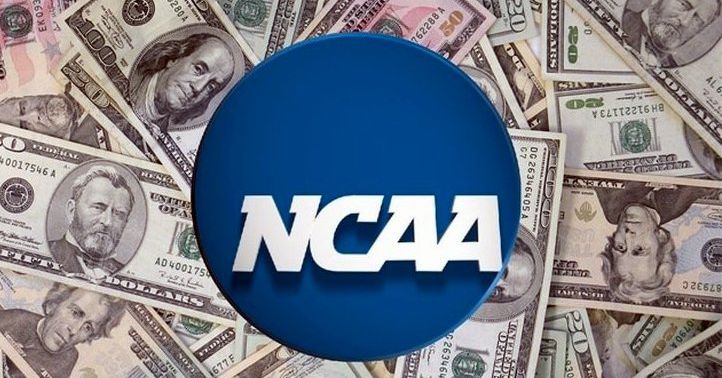
Crackdown on NIL Collectives Could Reshape College Sports Landscape
A new enforcement agency in college sports has drawn a firm line regarding the regulation of name, image, and likeness (NIL) payments to athletes — a move that could dismantle how many school-affiliated collectives currently operate.
On Thursday, the College Sports Commission (CSC) issued new guidance that significantly narrows what qualifies as a “valid business purpose” for NIL deals. The announcement came just days after the $2.8 billion House v. NCAA settlement took effect on July 1, establishing a clearinghouse called NIL Go to review third-party deals exceeding $600.
The goal is to prevent schools from circumventing the new $20.5 million revenue-sharing cap by routing funds through booster-backed collectives.
According to the CSC, any entity whose primary function is paying athletes — rather than offering legitimate goods or services to the public — fails to meet NIL Go’s standards. This includes collectives that host events or sell merchandise primarily to fund player payments. Even if these events are open to the public or involve promotional efforts, the CSC says they still don’t qualify.
“For somebody to just slide you a few dollars because they want you to come or stay at a certain school and call it NIL — that’s make-believe,” Purdue Athletic Director Mike Bobinski said in an interview with NBC Sports.
The ruling has sent shockwaves through the NIL ecosystem. In the four years since NIL deals became legal, school-affiliated collectives have funneled hundreds of millions of dollars into athlete compensation — often functioning as unofficial arms of athletic departments. These groups have paid athletes for appearances, endorsements, and social media promotions. But with the CSC now rejecting most of these deals, that model appears to be collapsing.
A memo sent to Division I athletic directors clarified the new standard: agreements with collectives primarily created to pay athletes or benefit specific schools will no longer be approved. While external NIL deals are still allowed, they must be with companies offering real products or services to the general public and must reflect fair market value.
The backlash was immediate. The Collective Association, which represents NIL collectives nationwide, called the CSC’s interpretation “misguided,” arguing it ignores both legal precedent and the economic realities of college athletics. The group claimed collectives are essential to athlete support and are being unfairly targeted.
Adding to the frustration, collective leaders like Dalton K. Forsythe of Utah State’s Blue A Collective reported widespread rejections of submitted NIL deals. “Nearly 100 percent of collective-backed NIL deals are being denied,” Forsythe posted on X, citing inconsistent standards and poor communication from NIL Go.
In response, some top programs are already adjusting. Collectives affiliated with Colorado, Alabama, Notre Dame, Georgia, and others have announced shutdowns. Meanwhile, schools like Ohio State, Georgia, and Illinois are partnering with Learfield — a long-established media and licensing firm — to ensure NIL deals comply with the new rules.
Despite the chaos, NIL Go has approved over 1,500 deals since launching in June, ranging in value from hundreds to millions of dollars. More than 12,000 athletes and 1,100 institutions are already registered. However, most approved transactions have involved athletes and legitimate businesses — not donor collectives.
Ultimately, the CSC has made clear that the future of NIL lies in traditional sponsorships and commercial endorsements, not donor-funded payouts. Whether courts will uphold these rules — or whether athletes will challenge them on antitrust grounds — remains to be seen. For now, though, the days of collectives writing large checks behind the scenes may be coming to an end.
NIL Crackdown Could Shake Up the Mountain West Conference
The College Sports Commission’s new enforcement guidance is expected to significantly impact the Mountain West Conference (MWC), where many schools have relied on donor-driven collectives to remain competitive in a rapidly evolving landscape.
With the July 1 implementation of the House v. NCAA settlement and the launch of NIL Go, third-party deals over $600 now require approval and must meet strict new standards. At the core is a simple requirement: NIL deals must have a “valid business purpose” and reflect “fair market value.” This change effectively invalidates many of the collective-based agreements MWC schools have used to attract and retain talent.
Why It Matters in the MWC
Unlike Power Five schools with massive alumni networks, national brand recognition, and lucrative TV deals, Mountain West programs have depended heavily on local businesses and booster collectives for NIL funding. These groups have helped schools compete for transfer portal athletes or retain breakout stars vulnerable to poaching.
That strategy is now at risk.
According to the CSC’s latest memo, any NIL deal where a collective pays an athlete merely for attending an event or helping promote merchandise — a common practice among MWC collectives — no longer meets the “valid business purpose” threshold. The Commission argues these transactions are not tied to legitimate commercial activity but instead serve as disguised payments, making them clear violations under the new rules.
Potential Fallout for Mountain West Schools
This shift could hit programs like Boise State, Fresno State, San Diego State, and Utah State particularly hard. These schools have developed strong football reputations but lack the deep financial backing of Big Ten or SEC institutions.
- Boise State has relied on a passionate fan base and collective support to maintain its status as a Group of Five powerhouse. Without that funding source, Boise could fall behind in the NIL arms race.
- Utah State’s Blue A Collective is already feeling the pressure. Director Dalton Forsythe reports that nearly all of their NIL submissions are being rejected under the new rules, calling the standards “unclear and unrealistic.”
- Fresno State and San Diego State have used competitive NIL offers to retain local talent, but that ability may diminish without collective-based funding, making it harder to keep players from transferring out.
Shifting the Strategy
With collective-led NIL deals under fire, Mountain West programs will need to shift toward compliant, athlete-to-business partnerships. But that transition won’t be easy. Local businesses in MWC markets often lack the advertising budgets or incentive to sign athletes without school involvement.
Some Power Five schools have already moved to fill this gap by partnering with companies like Learfield to streamline compliant NIL opportunities. Mountain West institutions may need to follow suit, though doing so with fewer resources will be a steep challenge.
The Bigger Picture
This shake-up may further widen the gap between Power Five and Group of Five programs. Although the House settlement allows schools to compensate athletes up to $20.5 million annually directly, most MWC institutions don’t have the budget flexibility to fully utilize that cap.
Mountain West Commissioner Gloria Nevarez said the league is considering implementing a revenue-sharing minimum starting in the 2025-26 season. If approved, the plan would ensure at least a baseline level of NIL funding across the conference. However, lingering legal issues over departing members and the lack of a finalized media rights deal leave much uncertain.
Nevarez emphasized that protecting competitive balance is critical, especially as NIL compensation becomes central to recruiting.
Without collectives as a workaround, the Mountain West risks becoming a feeder league, developing top talent only to watch it transfer to schools offering better NIL opportunities.
In short, unless national rules shift again — or MWC schools find new, sustainable NIL models — the league’s ability to compete at a national level could suffer dramatically under this new NIL landscape.
As everything in the NCAA college sports scene, you just don’t know what a day will bring. It’s like this big NCAA college soap opera from a fan’s perspective.
As the NIL landscape undergoes its most dramatic shift yet, the Mountain West Conference finds itself at a crossroads.
The new rules may level the playing field in theory, but in practice, they risk sidelining programs that have used creativity and community support to stay relevant.
With traditional collectives on the chopping block and commercial partnerships harder to come by in smaller markets, MWC schools must now adapt quickly—or risk falling further behind in a system increasingly tilted toward the power conferences.
The next chapter in college athletics will be defined not just by talent on the field, but by who can navigate the off-field rules best.
NIL
Mike Gundy admits Oklahoma State finally 'bought' players in the transfer portal
Go to On3 Home About On3AboutAdvertisersCareersContact SupportCustomer ServicePrivacy PolicyChildren’s Privacy PolicyTerms of Service On3 ConnectTwitterFacebookInstagram The On3 App for college sports fans: © 2025 On3 Media, Inc. All rights reserved. On3 is a registered trademark of On3 Media, Inc. 0
NIL
CBS Sports ranks Big 12 Football head coaches’ seats from hottest to coolest
Fresh off of Big 12 Media Days in Frisco, Tex., CBS Sports has ranked Big 12 football head coaches’ seats from hottest to coolest. Unlike other conferences, however, there aren’t many contenders in the conference to truly be on the hot seat. Consistent play and new hires litter the Big 12. That means a change […]

Fresh off of Big 12 Media Days in Frisco, Tex., CBS Sports has ranked Big 12 football head coaches’ seats from hottest to coolest. Unlike other conferences, however, there aren’t many contenders in the conference to truly be on the hot seat.
Consistent play and new hires litter the Big 12. That means a change in leadership following this upcoming season would be a little surprising, to say the least. Here are CBS Sports’ rankings from 1-16:
After 20 seasons in Stillwater, Mike Gundy‘s tenure at Oklahoma State could be coming to an end. This would be a huge change for the program.
“After a prolific playing career and leading the program to 169 victories as a head coach, Gundy is Oklahoma State football,” Athlon Sports wrote in its recent College Football Preview magazine for the 2025 season. “But after last year’s 3-9 record and reworked contract that included a pay cut, it’s clear that Gundy is under some pressure.”
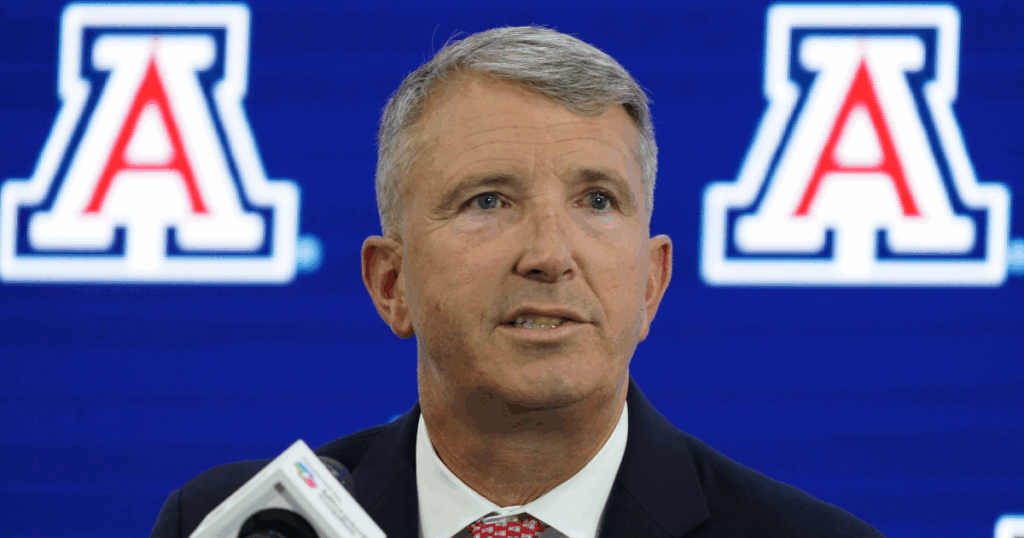
After just one season, Arizona‘s Brent Brennan is on the hot seat. Brennan, who made the jump from San Jose State to Arizona prior to its 2024 campaign, led the Wildcats to a lowly 4-8 record. Its eight losses came by an average of 23.9 points per game.
“Brennan inherited a roster capable of contending for the Big 12 title,” Athlon Sports wrote. “Instead, the Wildcats regressed to 4-8, with six losses by 20 points or more. Add in a new athletic director who didn’t hire Brennan, and it’s clear that the second-year coach needs to show marked improvement.”
Cincinnati is entering year three of the Scott Satterfield era and things still look like a mess. The Bearcats are just 8-16 (4-14) over his first two seasons, a far cry from when they made the College Football Playoff in 2021.
“Satterfield was a surprising hire for Cincinnati following a 17-19 record in his final three years at Louisville,” Athlon Sports wrote. “Through two seasons, Satterfield has struggled to find his footing with an 8-16 mark.”
Three seasons removed from taking TCU to the College Football Playoff National Championship Game, Sonny Dykes could be hanging on the hot seat. Following that 13-2 season, the Horned Frogs are just 14-11 over the past two years.
“It’s crazy to say this about a team who played in the national championship, but this is the season that really matters when it comes to Sonny,” an anonymous Big 12 coach told Athlon Sports. “They built depth and recruited to fill every deficiency on that five-win team. Now what? They have the best signing classes in the league, and that matters because they’re also building NIL to keep the kids they want.”
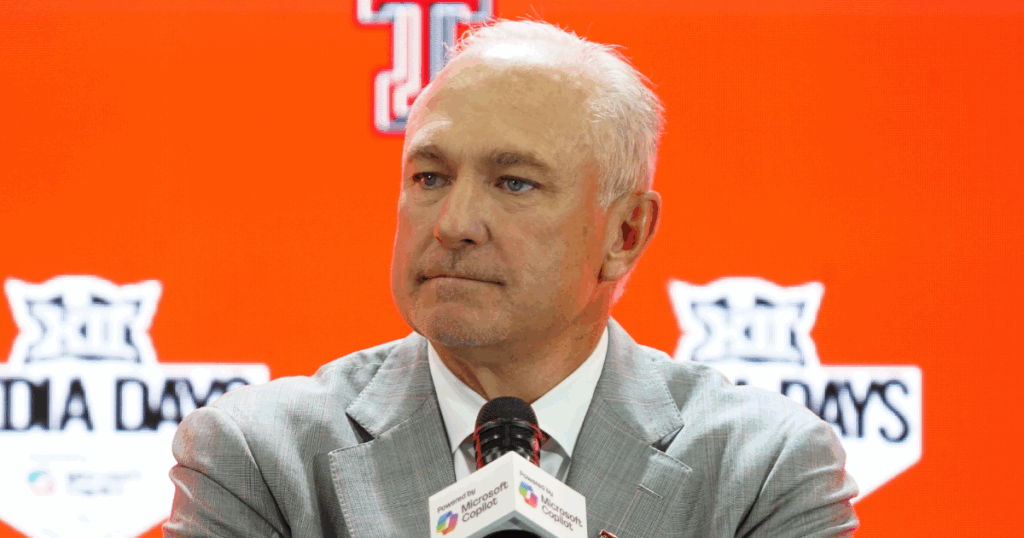
Joey McGuire‘s first three seasons have been consistent, as the Red Raiders have won at least seven games in all three years, along with two bowl victories. However, if McGuire doesn’t take Texas Tech to that next level this season, his seat could get a little warm.
“If they’re not a double-digit win team this season, it will be considered a failure,” an anonymous Big 12 coach told Athlon Sports. “It’s hard to know if that’s fair, or if spending like this is a smart long-term strategy.”
Dave Aranda and Baylor broke through in his second season at the helm (2021), winning 12 games and the Big 12 Championship. Since then, however, the Bears are just 17-21.
With a strong returning cast, led by quarterback Sawyer Robertson, another disappointing season could turn heads amongst the suits in Waco. The Bears look to avoid that being the case.
Nos. 7-16
7. Scott Frost, UCF Knights (19-7)
8. Rich Rodriguez, West Virginia Mountaineers (60-26)
9. Willie Fritz, Houston Cougars (4-8)
10. Kalani Sitake, BYU Cougars (72-43)
11. Lance Leipold, Kansas Jayhawks (22-28)
12. Chris Klieman, Kansas State Wildcats (48-28)
13. Kyle Whittingham, Utah Utes (167-86)
14. Matt Campbell, Iowa State Cyclones (64-51)
15. Deion Sanders, Colorado Buffaloes (13-12)
16. Kenny Dillingham, Arizona State Sun Devils (14-12)
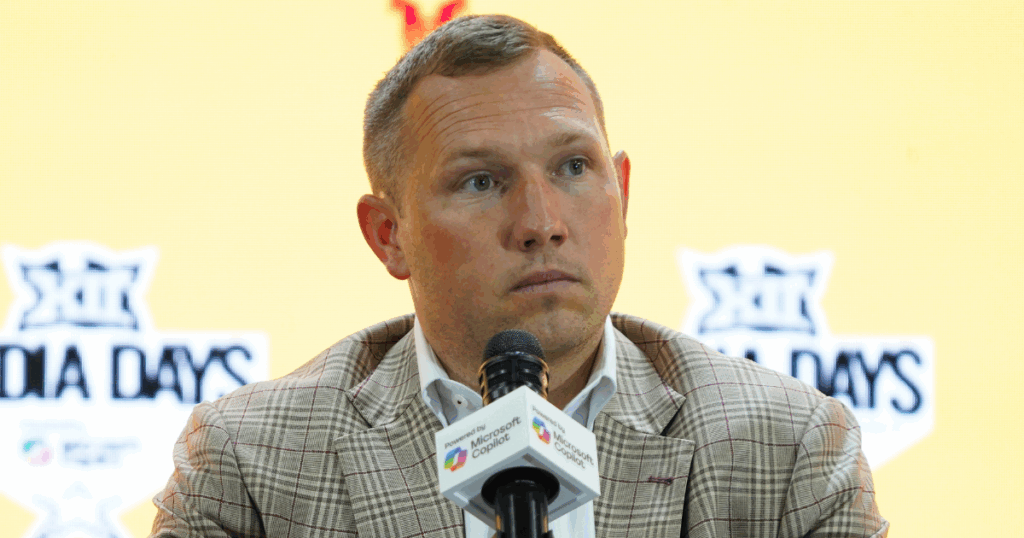
NIL
Federal lawmakers propose regulation for college NIL
MONTGOMERY, Ala. (WSFA) – Federal lawmakers are pushing to bring nationwide consistency to how college athletes profit from their name, image, and likeness — commonly known as NIL. Rep. Shomari Figures, who represents Alabama’s 2nd Congressional District, introduced a bill in Congress this week aimed at creating clear national standards for student-athlete compensation, naming it […]

MONTGOMERY, Ala. (WSFA) – Federal lawmakers are pushing to bring nationwide consistency to how college athletes profit from their name, image, and likeness — commonly known as NIL.
Rep. Shomari Figures, who represents Alabama’s 2nd Congressional District, introduced a bill in Congress this week aimed at creating clear national standards for student-athlete compensation, naming it the Student Compensation and Opportunity through Rights and Endorsements (SCORE) Act.
“The environment and the landscape of college athletics have changed drastically over the past several years, especially since the Supreme Court decision that came out,” Figures said. “There was a huge need here to stabilize what was going on.”
The SCORE Act extends beyond paychecks. It includes provisions for career development, comprehensive medical care, and protections for athletes who are injured — efforts that Figures said are crucial to long-term success both on and off the field.
“Making sure that student-athletes are not just prepared to participate on the field or the court, but making sure they are there at the end of the day to receive degrees,” Figures said.
The bill also aims to level the playing field for colleges and universities nationwide, ensuring every athletic program operates under the same set of rules.
“It removes this landscape of what some have referred to as the Wild, Wild West of NIL,” Figures said. “It brings everything under … some very straightforward guidelines.”
The proposal has drawn bipartisan support. Sen. Tommy Tuberville, a former college football coach, said smaller schools have been at a disadvantage in the current NIL environment.
“There are some teams that can’t afford to do that,” Tuberville said. “We want to make it fair for everybody.”
Figures said the bill is still a work in progress, but he remains optimistic.
“We’re hopeful to see some progress here,” he said. “There will still be some changes, some things that have to be further discussed. We want this bill to be the strongest it can be to provide the best protections for our student-athletes.”
Not reading this story on the WSFA News App? Get news alerts FASTER and FREE in the Apple App Store and the Google Play Store!
Copyright 2025 WSFA. All rights reserved.
-

 Technology2 weeks ago
Technology2 weeks agoPet fitness and wellness trends for a healthier and happier dog
-

 College Sports2 weeks ago
College Sports2 weeks agoWAC to Rebrand to UAC, Add Five New Members in 2026
-

 Motorsports2 weeks ago
Motorsports2 weeks agoWhy Cosmetics are Making Up for Lost Time in Women’s Sports
-

 Professional Sports3 weeks ago
Professional Sports3 weeks agoFrancis Ngannou sends Dana White a message following Jon Jones' shock UFC retirement
-

 College Sports2 weeks ago
College Sports2 weeks agoA new era of Dickinson hockey begins behind the bench – The Dickinson Press
-

 Sports3 weeks ago
Sports3 weeks agoSEC Conference imposing a fine will create the opposite effect.
-

 Health2 weeks ago
Health2 weeks agoFlorida assault survivor shares hope for change with new mental health law
-

 Motorsports2 weeks ago
Motorsports2 weeks agoNASCAR This Week – Patriot Publishing LLC
-

 Motorsports1 week ago
Motorsports1 week agoTeam Penske names new leadership
-

 Youtube3 weeks ago
Youtube3 weeks agoFunniest MLB rain delay moments


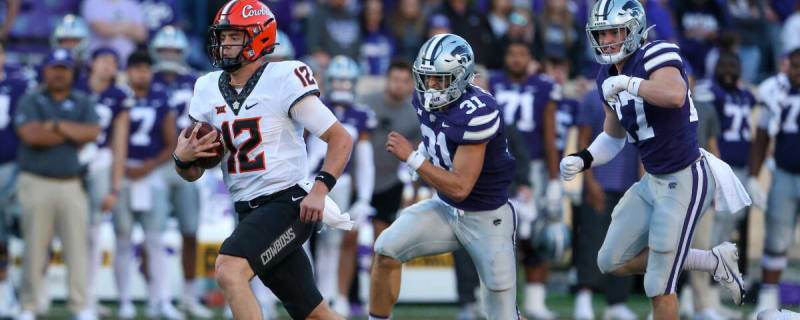
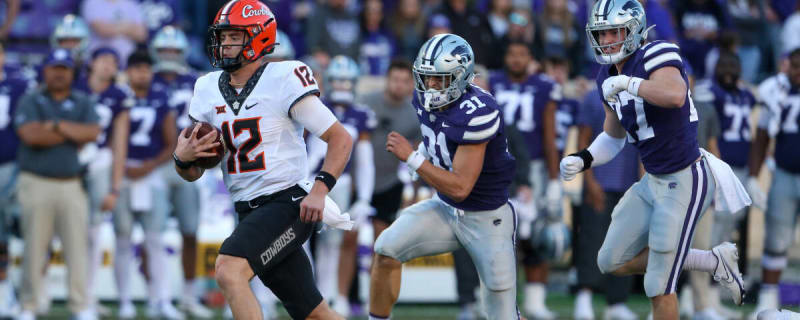







 ‘WHAT DEFINES GREATNESS?’ | First Take
‘WHAT DEFINES GREATNESS?’ | First Take





















